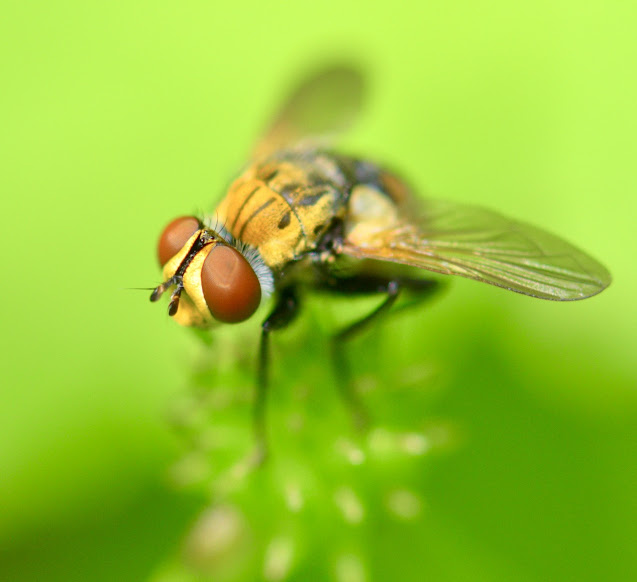Enjoy the benefits of connection with nature. Jericho, Underhill, Richmond, Bolton, (VT) Inverting Club Biodiversity monthly report.
JURBIC BIODIVERSITY REPORT
JURBIC iNaturalist Numbers
Will you report your observations on iNaturalist?
Links below are short videos on how to upload observations to iNaturalist. Tutorial from North Branch Nature Center.
iNaturalist: uploading observations using desktops and laptops
iNaturalist: uploading observations with mobile devices
Links below are short videos on how to upload observations to iNaturalist. Tutorial from North Branch Nature Center.
iNaturalist: uploading observations using desktops and laptops
iNaturalist: uploading observations with mobile devices
Observing the behavior and the life cycle of insects is like getting to know someone as an individual vs. knowing them by name and infrequent contact only.
- Bernie
View the 2023 iNaturalist observation numbers at Discovering Life in Jericho - 2023 by the NumbersThe Eight Major Orders of Insects
There are 26 orders of insects, but the vast majority belong to only these eight. Below is a short guide to the identification of the eight major orders.
Beetles Coleoptera (“sheath wings”)
- - largest order of living things with over 290,000 species known worldwide
- - two pairs of wings, but the outer pair is hardened covering the top of the body and meeting in a straight line down the back.
- - have “chewing jaws”
- - metamorphosis is complete
Moths, Butterflies Lepidoptera (“scaly wings”) - - second largest order of insects (beetles are #1) - mostly moths
- - two pairs of wings covered with small scales that rub off easily
- - only insects with sucking mouth parts in the form of a coiled tube.
- - in the larval stage, most butterfly and moth species feed on leaves, often of a particular plant or related group of plants
- - metamorphosis is complete
Bees, Wasps, Ants Hymenoptera (“membrane-winged”) - - third largest order.
- - have 2 pairs of thin, clear, membraneous wings.
- - females have a well-developed egg-laying organ and/or stinger at the end of their abdomen
- - ants have wings only at certain stages of life, some have stingers, too
- - considered the most highly evolved order of insects.
- - Most wasps are parasites; their young hatch and develop inside the bodies of other insects or spiders. These parasites are our chief ally in the control of many pest insects.
- - Bees and wasps are important pollinators of food crops and other plants.
- - metamorphosis is complete
Flies, Mosquitoes, Gnats Diptera (“two wings”) - - fourth largest order (third in North America)
- - if an insect has just one pair of wings, it is a fly of some kind.
- - all adult flies have sucking mouth parts
- - metamorphosis is complete
Crickets, Grasshoppers, Locusts Orthoptera (“straight wings”) - - thin, leathery forewings that cover larger hind wings that are folded like a fan when at rest.
- - important food for birds and other insect eaters.
- - metamorphosis is gradual
Dragonflies, Damselflies Odonata (“tooth”)
- - 2 pairs of long, narrow, membranous wings that are roughly equal in size.
- - they also have large eyes and extremely long, narrow abdomens.
- - at rest, dragonflies hold wings out flat, while damselflies hold wings together abovetheir bodies.
- - adults feed on other insects (gnats, mosquitoes)
- - metamorphosis is gradual
Aphids, Cicadas, Leafhoppers Homoptera (“same wings”) - - 2 pairs of membranous wings held in a tent-like or rooftop position over the body when at rest.
- - adults (except Cicadas) feed on plant sap
- - metamorphosis is gradual
Bugs, Backswimmers, Water Striders Hemiptera (“half-wings”) - - identified by a triangle on the back just behind the head. This is formed by the way the insects fold their forewings when at rest.
- - 2 pairs of wings; hind wings are membranous, while the basal half of the forewings is hardened.
- - metamorphosis is gradual
OTHER INSECTS OF IMPORTANCE
Termites: small, soft-bodied, pale with short, straight antennae. Flying forms have 2 pairs of wings. Do not have constricted waist like ants. Have sophisticated societies - the queen may live 10 years. Most of the 41 species live in the SE. Eat cellulose of the wood fibers making them bad for buildings but valuable for breaking down dead wood in the forests.
Springtails: tiny, wingless with prominent antennae. The forked structure allows them to “spring” into the air. Among the most abundant creatures on earth, are millions per acre. Immensely beneficial in breaking down leaf litter and fungi into soil components. Include “snow fleas.”
Bristletails: wingless, crawling, terrestrial with long segmented antennae and 3 long “tails”. Include silverfish and firebrats. Eat decaying plants outdoors and starchy substances including books, wallpaper, and clothing indoors. Among the most primitive of insects.
Reference: Peterson First Guides / Insects by Christopher Leahy Observing Insect Lives by Donald Stokes, 1983
Traditional research on pollinators has focussed on specific bee groups, such as honeybees and bumblebees (Kremen et al., 2002; Klatt et al., 2014; Lemanski et al., 2022). However, recent studies have demonstrated the equally critical roles played by other insect groups, including ants, beetles, bugs, butterflies, flies, and wasps (Rader et al., 2016; Rader et al., 2020; Requier et al., 2023). - Masari Date, Yuya Fukano, Sayed Ibrahim Farkhary, Kei Uchida, Masashi Soga, (April 2024).
The Eight Major Orders of Insects
There are 26 orders of insects, but the vast majority belong to only these eight. Below is a short guide to the identification of the eight major orders.
Beetles Coleoptera (“sheath wings”)
- - largest order of living things with over 290,000 species known worldwide
- - two pairs of wings, but the outer pair is hardened covering the top of the body and meeting in a straight line down the back.
- - have “chewing jaws”
- - metamorphosis is completeMoths, Butterflies Lepidoptera (“scaly wings”)
- - second largest order of insects (beetles are #1) - mostly moths
- - two pairs of wings covered with small scales that rub off easily
- - only insects with sucking mouth parts in the form of a coiled tube.
- - in the larval stage, most butterfly and moth species feed on leaves, often of a particular plant or related group of plants
- - metamorphosis is completeBees, Wasps, Ants Hymenoptera (“membrane-winged”)
- - third largest order.
- - have 2 pairs of thin, clear, membraneous wings.
- - females have a well-developed egg-laying organ and/or stinger at the end of their abdomen
- - ants have wings only at certain stages of life, some have stingers, too
- - considered the most highly evolved order of insects.
- - Most wasps are parasites; their young hatch and develop inside the bodies of other insects or spiders. These parasites are our chief ally in the control of many pest insects.
- - Bees and wasps are important pollinators of food crops and other plants.
- - metamorphosis is completeFlies, Mosquitoes, Gnats Diptera (“two wings”)
- - fourth largest order (third in North America)
- - if an insect has just one pair of wings, it is a fly of some kind.
- - all adult flies have sucking mouth parts
- - metamorphosis is completeCrickets, Grasshoppers, Locusts Orthoptera (“straight wings”)
- - thin, leathery forewings that cover larger hind wings that are folded like a fan when at rest.
- - important food for birds and other insect eaters.
- - metamorphosis is gradual
Dragonflies, Damselflies Odonata (“tooth”)
- - 2 pairs of long, narrow, membranous wings that are roughly equal in size.
- - they also have large eyes and extremely long, narrow abdomens.
- - at rest, dragonflies hold wings out flat, while damselflies hold wings together abovetheir bodies.
- - adults feed on other insects (gnats, mosquitoes)
- - metamorphosis is gradualAphids, Cicadas, Leafhoppers Homoptera (“same wings”)
- - 2 pairs of membranous wings held in a tent-like or rooftop position over the body when at rest.
- - adults (except Cicadas) feed on plant sap
- - metamorphosis is gradualBugs, Backswimmers, Water Striders Hemiptera (“half-wings”)
- - identified by a triangle on the back just behind the head. This is formed by the way the insects fold their forewings when at rest.
- - 2 pairs of wings; hind wings are membranous, while the basal half of the forewings is hardened.
- - metamorphosis is gradualOTHER INSECTS OF IMPORTANCE
Termites: small, soft-bodied, pale with short, straight antennae. Flying forms have 2 pairs of wings. Do not have constricted waist like ants. Have sophisticated societies - the queen may live 10 years. Most of the 41 species live in the SE. Eat cellulose of the wood fibers making them bad for buildings but valuable for breaking down dead wood in the forests.
Springtails: tiny, wingless with prominent antennae. The forked structure allows them to “spring” into the air. Among the most abundant creatures on earth, are millions per acre. Immensely beneficial in breaking down leaf litter and fungi into soil components. Include “snow fleas.”
Bristletails: wingless, crawling, terrestrial with long segmented antennae and 3 long “tails”. Include silverfish and firebrats. Eat decaying plants outdoors and starchy substances including books, wallpaper, and clothing indoors. Among the most primitive of insects.
Reference: Peterson First Guides / Insects by Christopher Leahy Observing Insect Lives by Donald Stokes, 1983





























